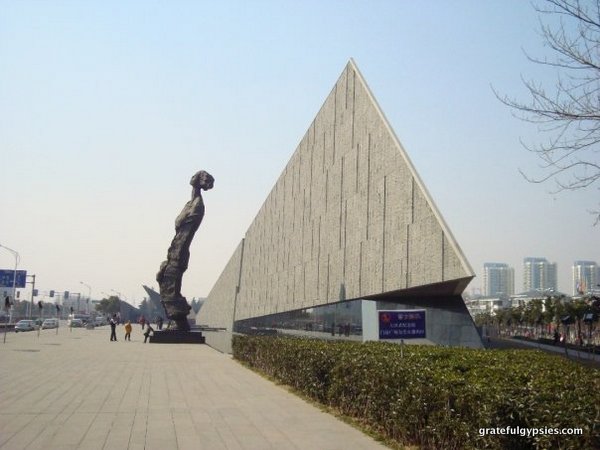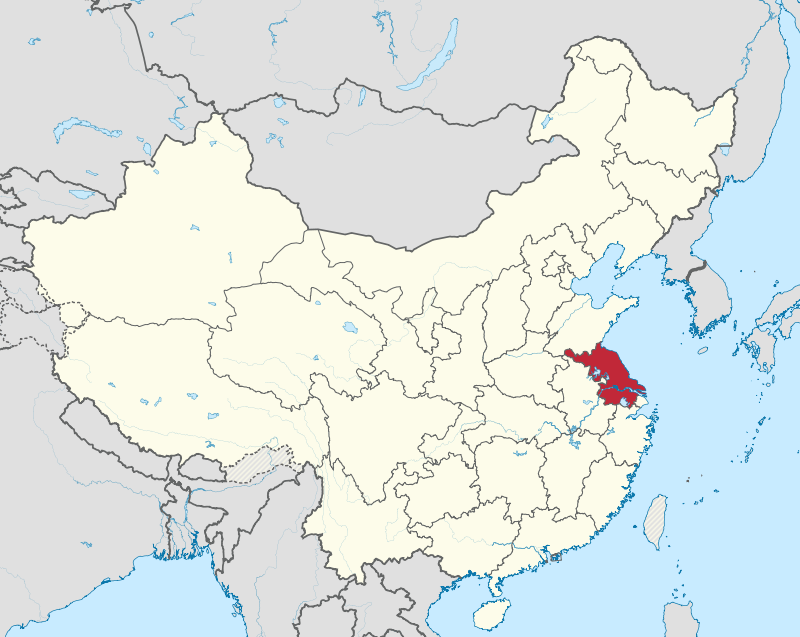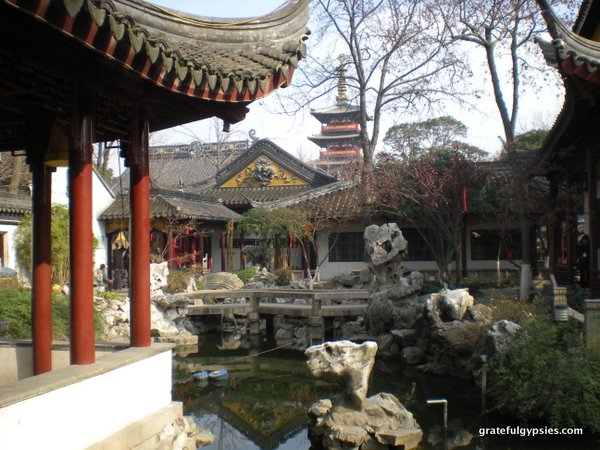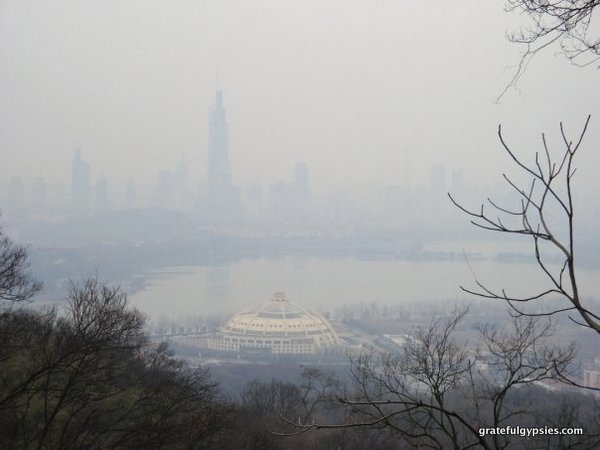Better Know a Province – Jiangsu Posted by sasha on Dec 7, 2016 in Culture
Our long and winding journey around China continues as we explore the coastal province of Jiangsu (江苏 – jiāng sū). Read on to learn about the province’s fascinating history, its famed cuisine, and some of its most famous places.
History
What is now Jiangsu was once part of the ancient state of Wu (吳). In fact, during the Zhou Dynasty (1046–256 BCE), much of the area wasn’t even considered to be within Chinese borders. Later, during the Spring and Autumn and Warring States periods, it was considered to be an outer state. It became a great power – with its capital located at Jianye (site of modern Nanjing) – but was eventually defeated by the state of Yue.
During the Three Kingdoms period, southern Jiangsu was the base for the Eastern Wu. This was one of the Six Dynasties (六朝 – liù cháo) in Chinese history. During this time, the area received many immigrants from the north, growing into a major commercial and trade center. Nanjing would be the capital of many more dynasties, including the Ming until they moved it to Beijing. The names of the two cities actually mean “Southern Capital” (Nanjing), and “Northern Capital” (Beijing).
In the Qing Dynasty, modern day Jiangsu was combined with Anhui into a province called Jiangnan (“South of the River”). It wasn’t until 1966 that the region was split into two different provinces. The area suffered greatly during the Taiping Rebellion, with the rebels actually establishing their capital at Nanjing. Later on in the 20th century, Chiang Kai-shek made the city capital with his Nationalist forces. Not long after that, the city would fall to the Japanese during the Sino-Japanese War. The three months of atrocities that followed would come to be known as the Nanjing Massacre (南京大屠杀 – nán jīng dà tú shā).
During the Chinese Civil War, the Kuomintang were eventually forced out of Jiangsu once the Communists took Nanjing. They fled southwards, eventually ending up in Taipei. When Mao and the Communists had emerged victorious, they moved the capital north to Beijing. Decades later – after the economic reforms of Deng Xiaoping – cities such as Suzhou and Wuxi became incredibly prosperous and remain so.
Geography
Jiangsu province is located on China’s east coast, just north of Shanghai. To the east lies the Yellow Sea (黄海 – huáng hǎi), and it also shares a border with Anhui (west), Zhejiang (south), and Shandong (north). For the most part, this province is flat and low-lying. Plains and water cover a vast majority of the province, with an abundance of canals. It’s the lowest and flattest province in China – most of it is located less than 45 meters (150 ft) above sea level. The highest point in Jiangsu is Mt. Yuntai (云台山 – yún tái shān), at 625 meters (2,051 ft) above sea level.
Climate
Most of the province can be categorized as a humid subtropical climate, while the far south begins a transition to a humid continental climate. Across the province there are four distinct seasons, although temperature changes are more extreme in the north. Generally speaking, winters are cold (but nothing like Northeast China), and summers are hot and humid. Most of the rain falls between spring and summer during monsoon season.
Population
By the end of 2012, the population of Jiangsu was estimated at just over 79 million. You may be surprised to learn that it is the most densely populated province in all of China, with 767 persons per square kilometer. The people of Jiangsu are almost entirely Han Chinese (around 99.5%), with a very small group of Hui and Manchus.
Culture
Jiangsu is very much split culturally, as evidenced by the language. People in the southern part of the province – known as Jiangnan – speak Wu Chinese (吴语 – wú yǔ). In other areas, different dialects of Mandarin are spoken. Mandarin and Wu are not mutually intelligible, but most people can speak the standard language if need be.
Kunqu (昆曲 – kūn qǔ) is one of the oldest and most refined forms of Chinese theater. Developed in the Ming Dynasty, it contains elements of opera, ballet, poetry, and music. It even made the UNESCO Representative List of the Intangible Cultural Heritage of Humanity. See what it looks like in this clip of the classic “The Peony Pavilion” (牡丹亭 – mǔ dān tíng):
Jiangsu cuisine (江苏菜 – jiāng sū cài) is one of the most famous across China. A sub-regional style from Jiangsu known as Huaiyang cuisine (淮扬菜 – huái yáng cài) is so famous that it’s actually included in the Four Great Culinary Traditions (四大菜系 – sì dà cài xì), along with Cantonese, Shandong, and Sichuan. Food is very meticulously prepared, especially in the way that meat or fish is cut. Most main courses use pork or freshwater fish. It’s slightly sweet and almost never spicy, so don’t worry about it setting your mouth on fire like Sichuan food.
The province is also known for its embroidery, stone bridges, water towns, and classical gardens.
Famous Places
The capital city Nanjing (南京 – nán jīng) is one of four ancient capitals in China. Not surprisingly, this is the most popular place for tourists. The city is home to a vast array of historical sites, such as the Purple Mountain, Sun Yat-sen Mausoleum, and the Nanjing Massacre Memorial.
Suzhou (苏州 – sū zhōu) is highly regarded for its beautiful canals and gardens. When Marco Polo visited in 1276, he was so impressed that he called it the “Venice of the East.” There are also quite a few water towns in Jiangsu, such as Zhouzhuang (周庄 – zhōu zhuāng). Near Wuxi (无锡 – wú xī), you can see the Lingshan Grand Buddha (灵山大佛 – líng shān dà fú). At 88 meters, this is one of the tallest Buddha statues in the world.
With its many historical sites, vibrant culture, beautiful gardens, and delicious cuisine, Jiangsu is definitely a province worth exploring. See more of Jiangsu in this video from CCTV’s Travelogue:
Let us know in the comments if you’ve been there!
Have you been to Jiangsu?
你去过江苏吗?
nǐ qù guò jiāng sū ma

Build vocabulary, practice pronunciation, and more with Transparent Language Online. Available anytime, anywhere, on any device.
About the Author: sasha
Sasha is an English teacher, writer, photographer, and videographer from the great state of Michigan. Upon graduating from Michigan State University, he moved to China and spent 5+ years living, working, studying, and traveling there. He also studied Indonesian Language & Culture in Bali for a year. He and his wife run the travel blog Grateful Gypsies, and they're currently trying the digital nomad lifestyle across Latin America.









Leave a comment: